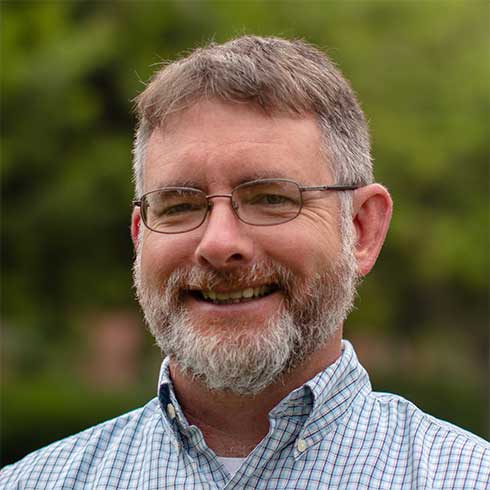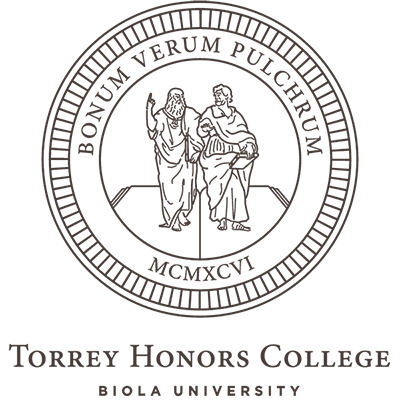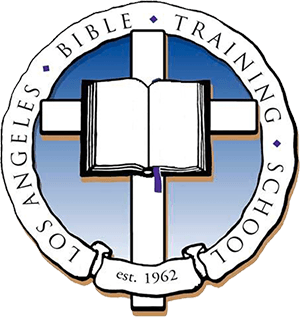A scene from The Canterbury Psalter (12th century)
Blog
Matthew 28:19 in Nazianzus’ Theological Orations

Gregory of Nazianzus has a very special way of using the phrase, “the Father, the Son, and the Holy Spirit” in his Five Theological Orations. The phrase is of course from the end of Matthew’s Gospel, where the risen Jesus gives the command to make disciples of all nations, baptizing them in this name. Nazianzus’ Five Theological Orations are a classic work of patristic trinitarian theology, immensely influential and justly famous for their rhetorical polish and power. So it is interesting to see how Nazianzus handles the baptismal name in this work.
He uses it exactly seven times. If you’ve got the SVS edition of the Five Orations, you can find the passages on pages 37, 70, 118, 123, 138, 141, and 143.
In each occurrence, he uses the formula in a climactic fashion, or at a summative moment in his argument. It has, in other words, a rhetorical function within his argument structure.
These seven occurrences are:
Occurrence 1. Second Oration, section 1. “Well now let us go forward to discuss the doctrine of God, dedicating our sermon to our sermon’s subjects, the Father, the Son, and the Holy Spirit, that the Father may approve, the Son aid, and the Holy Spirit inspire it –or rather that the single Godhead’s single radiance, by mysterious paradox one in its distinctions and distinct in its connectedness, may enlighten it.” (37) Since Oration 1 was a short exhortation to humility in theological reasoning, Oration 2 is the real opening of the Trinitarian subject matter of the Five Orations. This is therefore a Trinitarian benediction on the sermons on the Trinity. Here at the beginning, Nazianzus names God and invokes his approval, help, and inspiration in Trinitarian cadences. Shortly Nazianzus will also refer to God using the actual word Trinity (Triad, p. 39), which is something he tends to do after using the Father-Son-Spirit formula. The formula, it seems, functions for Nazianzus as a kind of consolidating point that he has reference to when he is summarizing or telescoping an argument. He may wander far and wide in these orations, but when he wants to bring it to a point he flourishes the baptismal formula and the word Triad. This usage also seems to bring to Nazianzus’ awareness the distinction between the doctrine of the Trinity on one hand, and God the Trinity on the other, leading him to make puns and rhetorical reversals that play off of the distinction: Here he says “let us go forward to discuss the doctrine of God, dedicating our sermon to our sermon’s subjects,” and at the end of the third oration (89) he will even say that in defending this doctrine, “we are saving the Trinity, and by the Trinity can be saved.”
Occurrence 2. In a notoriously difficult section (70) of the third oration, Nazianzus states that the three persons rule all things as one “single governing principle,” and says rather delphically: “For this reason, a monad is eternally moved into a dyad and comes to rest at a triad.” He immediately advances a paraphrase: “meaning the Father, the Son, and the Holy Spirit.” We will not pause here to unpack Nazianzus’ monad-dyad-triad expression, or the inner-divine movement and rest which he immediately qualifies as “passionless, non-temporal, and incorporeal.” (Maximus the Confessor explains it at great length in his Ambigua to Thomas; see Maximus the Confessor, On Difficulties in the Church Fathers: The Ambigua, vol. 1, ed. and trans. by Nicholas Constas, (Cambridge: Harvard University Press, 2014), Ambigua to Thomas 1, pp. 7-11). What is worth noting rhetorically is that immediately after making a difficult statement framed in seductively speculative terms, Nazianzus touches home base, as it were, with the traditional formula.
Occurrence 3. The remaining occurrences are all within the fifth and final oration, because it is only when due consideration is given to the Holy Spirit that Nazianzus can talk consistently about a triad. The third occurrence is in section 3 of the fifth oration (118), as Nazianzus proves the deity of the Holy Spirit and ostentatiously applies “identical expressions to the Three.” The Father is the true light that enlightens every one coming into the world, the Son is the true light that enlightens every one coming into the world, and the Comforter is the true light that enlightens every one coming into the world.
Occurrence 4. The fourth occurrence is in a crucial summation of Nazianzus’ arguments about eternal relations: “The very facts of not being begotten, of being begotten and of proceeding, give them whatever names are applied to them –Father, Son, and Holy Spirit respectively. … The three are a single whole in their Godhead and the single whole is three in personalities.” Not here again the sweeping rhetorical move of expansion and contraction: Nazianzus extends his language to the personal characteristics of relations of origin –unbegotten, begotten, proceeding—and immediately retreats to the scriptural language of the baptismal formula, and the word triad. This has the effect of reassuring the listener that the unusual language is intended to be harmonious with the traditional formula.
Occurrence 5. The fifth occurrence (138) is especially climactic: after arguing that the Spirit’s fully divine authority was gradually revealed, Nazianzus anatomizes the Spirit’s sending thus: The Father will send the Comforter, the Son will ask for him to be sent, saying also “I shall send” him, and fin ally the Spirit’s own authority and initiative are disclosed in the phrase, “He shall come.”
Occurrence 6:. The sixth occurrence (141) is provoked by Nazianzus’ modest foray into the realm of offering analogies for the Trinity. He mentions “a source, a spring, and a river,” and asks himself whether they correspond with “The Father, the Son, and the Holy Spirit.” Here Gregory uses the threefold name to underline the inadequacy of Trinitarian analogies.
Occurrence 7. And finally, on the last page of the orations (143), Nazianzus vows that to “the best of my powers I will persuade all men to worship Father, Son, and Holy Spirit as the single Godhead and power, because to him belong all glory, honor, and might forever and ever. Amen.” Just as he has used the formula to consolidate, summarize, and bring to a climax the various parts of the discussion, he concludes the entire set of orations with the same formula.
Nazianzus’ use of the triadic baptismal formula, the name of the Trinity, could be described as an allusion to the rule of faith. In its rhetorical deployment it certainly plays the role of clarifying difficult passages of the argument and of reassuring the listener that Nazianzus is not speculating freely. Hermeneutically, this deployment of the threefold name of God, associated as it is with the term Triad and the number three, keeps the long discussion from ever seeming like an open-ended search for characteristics of an unknown God. Nazianzus uses it as shorthand to signal the fact that a Christian interpreter knows what he is looking for when he sifts through the biblical statements and scrutinizes the events they report. He is looking for the Trinity, the three, the Father, Son, and Holy Spirit. He, the Christian theologian, has been told to do so by the tradition and liturgy of his church, by the gospel of Matthew, and therewith by the risen Lord himself.
[This blog post is from a conference paper I wrote in 2008 but never published. Actually, I took that paper apart and published most of the pieces here and there over the years, some in 2016’s The Triune God. But this section, a thousand-word close reading of how Nazianzus uses one key verse, never quite fit anywhere. I think it’s a good observation, and even kind of important. But it’s a scrap, and what else is a personal blog for if not disseminating unpublished scraps over a dozen years later? (I cleaned it up a little bit and updated the Maximus reference.) I wrote it for the “Holy Trinity in Holy Scripture” conference at Tyndale University College in Toronto in May of 2008, organized by Craig Carter. I remember the whole event very fondly. One of the highlights was that John Webster and Lewis Ayres were in the audience for the paper, and both asked me good questions. In fact, they just kept up a stream of good questions, interacting with me and with each other, then mainly with each other, and then more or less taking over my Q&A time to carry on what seemed to be the next phase of long-running discussion they’d been having. It was fantastic. That night in housing, the blankets were too thin, and I watched Mike Judge’s Idiocracy on Canadian YouTube. Okay, that’s my story.]
About This Blog

Fred Sanders is a theologian who tried to specialize in the doctrine of the Trinity, but found that everything in Christian life and thought is connected to the triune God.


